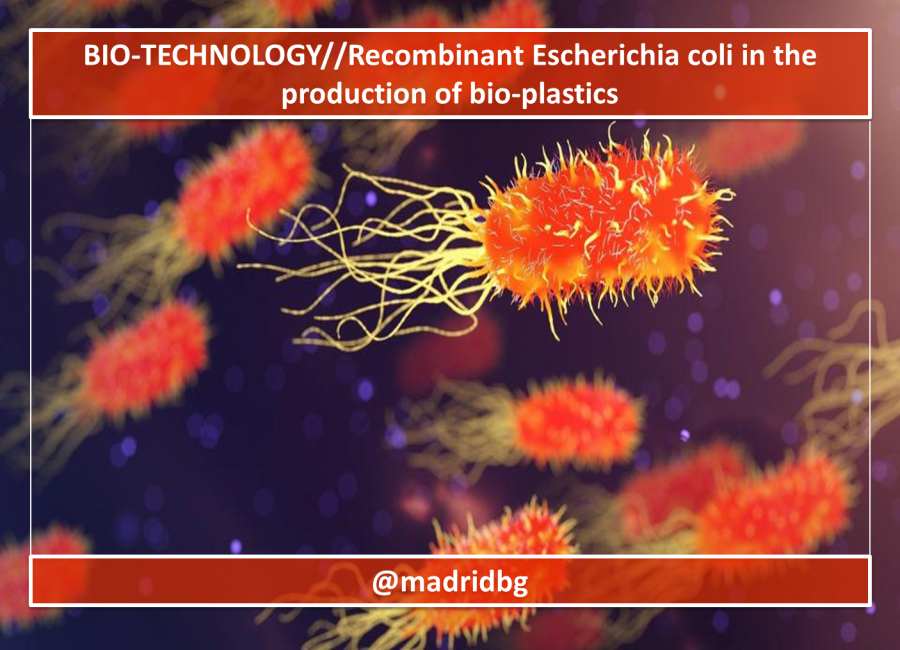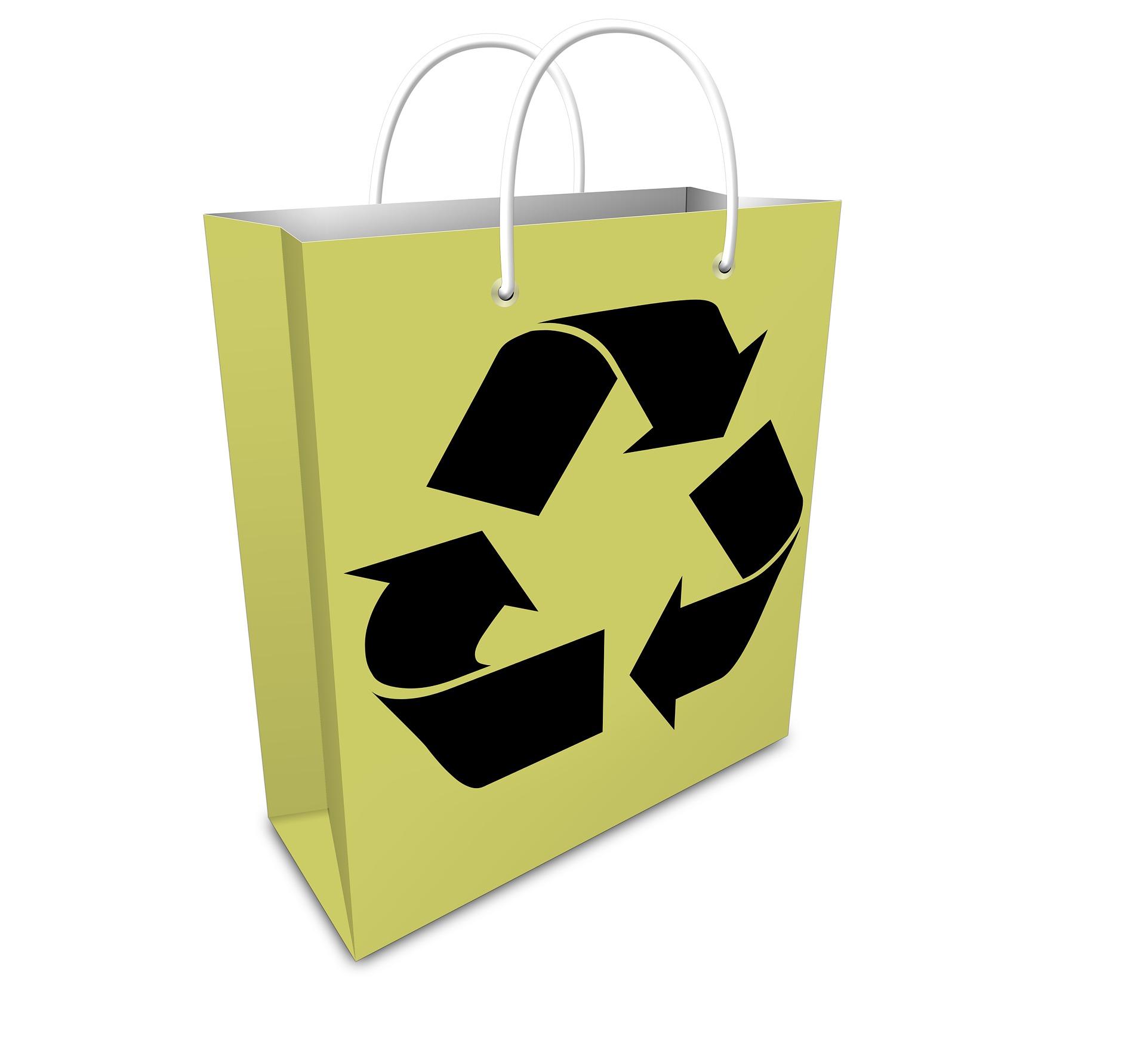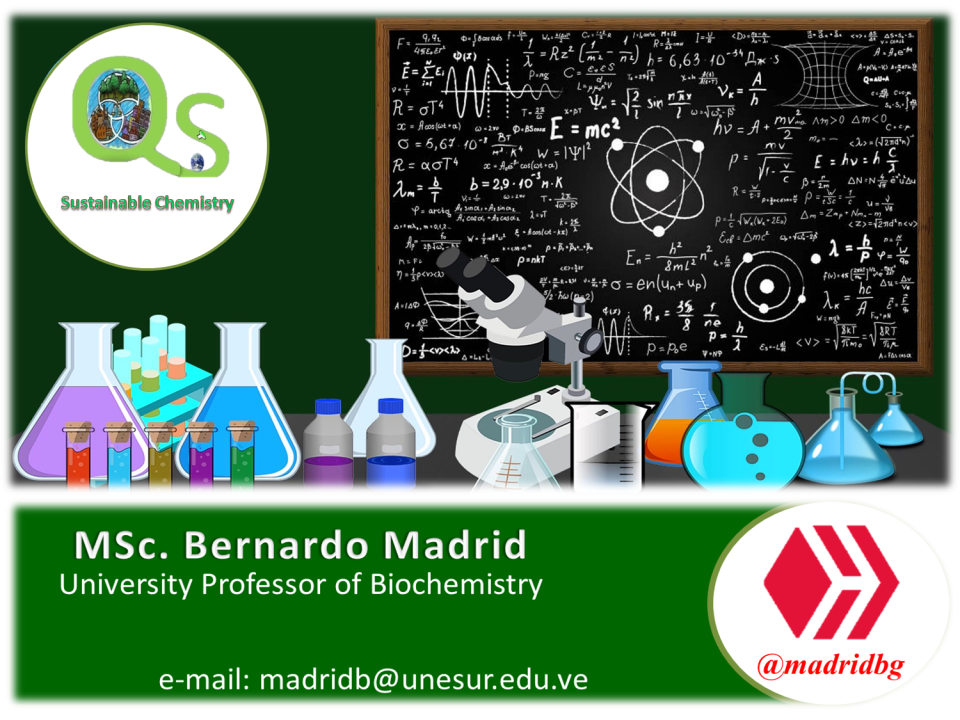BIO-TECHNOLOGY//Recombinant Escherichia coli in the production of bio-plastics
(Edited)

Author: @madridbg, through Power Point 2010, using public domain images.
Welcome dear readers of this prestigious platform, may this publication serve to continue addressing the use of biotechnology as a mechanism to generate substances to mitigate the environmental disorder generated by the discharge of plastic products into ecosystems.
As has been constant in my publications, this type of content will be shared through the @project.hope community, who support and value the topics associated with technological development.
In this sense, we will delve into bio-plastics (PHA), which are considered as linear hydroxy-carboxylated polymers, where an ester-like bond is generated between the carboxyl group of a monomer and the hydroxy group of another monomer within the molecule. Consequently, PHA are deposited intracellularly in the form of inclusion bodies, which usually represent more than 90% of the weight of the molecule.

Fig. 2. Representation of the PHA molecule. Author: NEUROtiker
These products have gained great importance over time thanks to the industrialization of society, where petroleum-derived plastic products have caused environmental imbalances due to their accumulation and resistance to environmental degradation processes.
Consequently, bio-plastics are assumed as possible substitutes for current plastic products, due to their thermoplastic properties, their degradation capacity so they are assumed to be biodegradable and because they are obtained through fermentative products obtained from agricultural processes.

Fig. 3. Bio-plastics are products that degrade easily under environmental conditions. Author: TheDigitalArtist
Properties that make it possible for many species, microorganisms or chemical substances to decompose it into environmentally harmless products. However, one of the disadvantages of this type of inventive is attributed to the production costs, which exceed those of petroleum products.
In reference to costs, research is currently being carried out on the degradation and synthesis of PHA through plants or microorganisms with the aim of eliminating production costs. In this sense, we will focus on Escherichia coli, this has been the microorganism that has responded best in the efficient proliferation of PHA and thanks to the characterization that we have of the species, it has been catalogued as a microorganism in fermentative uses that allow obtaining PHA with a biomass level that can compete with traditional plastics.

Fig. 4. Representation of Escherichia coli. Author: Gerd Altmann
While it is true that Escherichia coli, does not degrade or synthesize the substance, it allows it to multiply on its surface because it provides the ideal conditions for this purpose. Consequently, a recombinant Escherichia coli, has been developed where the genes cloned through Azotobacter sp are implanted in the EC with the purpose of achieving an accumulation of biopolymers with an efficiency percentage higher than 80%.
Although the development of this biotechnological system is being carried out at the laboratory level, adaptations are already being developed with the purpose of replicating it on an industrial scale, with the intention of designing an efficient and economically attractive prototype.
In this sense, from my perspective it is a work that generates many expectations since we will be leaving aside one of the products that has done so much damage to environmental ecosystems, since to date we can observe plastic products in the different bodies of water of our planet. Consequently, if you found this contribution interesting, please leave your comments.
BIBLIOGRAPHY CONSULTED
[1] De Almeida, A. Ruiz, A.López, N. Pettinari, M. Bioplastics: an ecological alternative. Química Viva, vol. 3, no. 3, 2004, pp. 122-133. University of Buenos Aires. Buenos Aires, Argentina. Article: Online Access
[2] Medina Ignacio, (2014). Bioinspired Algorithms: A review according to their biological basis. Article: Online Access
OF INTEREST
•

Grateful with the community @project.hope and with all the management team of the same one that they motivate us to continue working in a mutual and balanced growth.


0
0
0.000
https://twitter.com/BGMadrid/status/1358606589817741313
#posh twitter
https://twitter.com/BGMadrid/status/1358606589817741313?s=20
Hello @madridbg
It is a big step in biotechnology that could undoubtedly allow a substantial improvement in this aspect, decreasing the production of petroleum derivatives such as plastics.
Let's hope that it really works on a large scale and that the prices are not high.
Hi @josevas217, in particular I think that the environmental situation as we come out of the current pandemic will worsen as we have a long time of a partial recession in many technological and scientific aspects. That is why this development is essential to counteract what is to come. Greetings
Congratulations @madridbg! You have completed the following achievement on the Hive blockchain and have been rewarded with new badge(s) :
Your next target is to reach 600 comments.
You can view your badges on your board and compare yourself to others in the Ranking
If you no longer want to receive notifications, reply to this comment with the word
STOPCheck out the last post from @hivebuzz:
I never thought that this bacteria could have this utility. Very good post my friend @madridbg, thanks for sharing. Regards
Greetings my dear @carlos84, apparently nature and living systems never cease to surprise us, I believe that all the ills that afflict us have the solution based on natural processes and it is up to us to discover it. Thank you for commenting